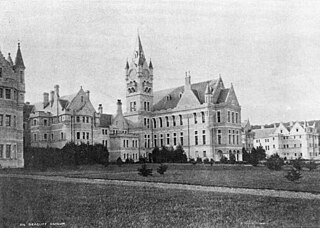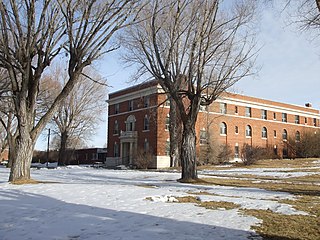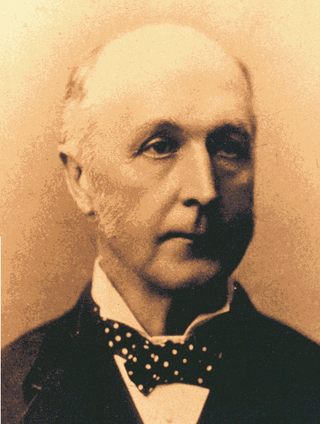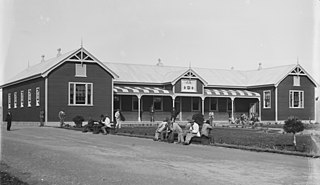Unitec Institute of Technology is the largest institute of technology in Auckland, New Zealand. 16,844 students study programmes from certificate to postgraduate degree level across a range of subjects.

Mont Park Asylum was a psychiatric hospital located in Macleod, an outer eastern suburb of Melbourne, Victoria, Australia. The hospital opened in 1912 and closed in the 1990s. Some of the former hospital buildings have since been used by the La Trobe University for administrative purposes.

Austin State Hospital (ASH), formerly known until 1925 as the Texas State Lunatic Asylum, is a 299-bed psychiatric hospital located in Austin, Texas. It is the oldest psychiatric facility in the state of Texas, and the oldest continuously operating west of the Mississippi River. It is operated by the Texas Health and Human Services Commission.
Aradale Mental Hospital was an Australian psychiatric hospital, located in Ararat, a rural city in south-west Victoria, Australia. Originally known as Ararat Lunatic Asylum, Aradale and its two sister asylums at Kew and Beechworth were commissioned to accommodate the growing number of 'lunatics' in the colony of Victoria. Construction began in 1864, and the guardhouses are listed as being built in 1866 though the list of patients extends as far back as the year before (1865). It was closed as an asylum in 1998 and in 2001 became a campus of the Melbourne Polytechnic administered Melbourne Polytechnic's Ararat Training Centre.

Friern Hospital was a psychiatric hospital in the parish of Friern Barnet close to a crossroads which had a hamlet known as Colney Hatch. In 1965, it became part of the London Borough of Barnet and in the early 21st century was converted to residential housing as Princess Park Manor and Friern Village. The hospital was built as the Second Middlesex County Asylum and was in operation from 1851 to 1993. After the County of London was created in 1889 it continued to serve much of Middlesex and of the newer county, London. During much of this time its smaller prototype Hanwell Asylum also operated.

Seacliff Lunatic Asylum was a psychiatric hospital in Seacliff, New Zealand. When built in the late 19th century, it was the largest building in the country, noted for its scale and extravagant architecture. It became infamous for construction faults resulting in partial collapse, as well as a 1942 fire which destroyed a wooden outbuilding, claiming 37 lives, because the victims were trapped in a locked ward.

Asylum architecture in the United States, including the architecture of psychiatric hospitals, affected the changing methods of treating the mentally ill in the nineteenth century: the architecture was considered part of the cure. Doctors believed that ninety percent of insanity cases were curable, but only if treated outside the home, in large-scale buildings. Nineteenth-century psychiatrists considered the architecture of asylums, especially their planning, to be one of the most powerful tools for the treatment of the insane, targeting social as well as biological factors to facilitate the treatment of mental illnesses. The construction and usage of these quasi-public buildings served to legitimize developing ideas in psychiatry. About 300 psychiatric hospitals, known at the time as insane asylums or colloquially as “loony bins” or “nuthouses,” were constructed in the United States before 1900. Asylum architecture is notable for the way similar floor plans were built in a wide range of architectural styles.

Kew Lunatic Asylum is a decommissioned heritage-listed psychiatric hospital located between Princess Street and Yarra Boulevard in Kew, a suburb of Melbourne, Australia. Operational from 1871 to 1988, Kew Asylum was one of the largest asylums ever built in Australia. Later known as Willsmere, the complex of buildings were constructed between 1864 and 1872 to the design of architects G.W. Vivian and Frederick Kawerau of the Victorian Public Works Office to house the growing number of "lunatics", "inebriates", and "idiots" in the Colony of Victoria.

Beechworth Asylum, also known in later years as the Beechworth Hospital for the Insane and Mayday Hills Mental Hospital, is a decommissioned hospital located in Beechworth, a town of Victoria, Australia. Mayday Hills Lunatic Asylum was the second such Hospital to be built in Victoria, being one of the three largest. Mayday Hills Hospital closed in 1995, following 128 years of operation.
Royal Park Psychiatric Hospital, commonly known as Royal Park is a former Receiving House and Psychiatric Hospital located in Parkville. Operating for over 90 years, Royal Park Hospital was the first psychiatric hospital established in Victoria after the Lunacy Act of 1903, and was intended for patients with curable disorders. Built on the north-western edge of the 181 hectare parklands known as Royal Park, Royal Park Hospital along with Royal Melbourne Hospital, Royal Children's Hospital and Mount Royal formed the Parkville Hospital Precinct. Following the hospital's closure in the 1990s, several of the hospital's original buildings have been listed on the Victorian Heritage Register for their historic and architectural values.

Frederick Norton Manning, was a medical practitioner, military surgeon, Inspector General of the Insane for the Colony of New South Wales, and was an Australian Lunatic Asylum Superintendent. He was a leading figure in the establishment of a number of lunatic asylums in the colonies of New South Wales and Victoria, and participated in inquests and reviews of asylums throughout the colonies.

The Park Centre for Mental Health is a heritage-listed psychiatric hospital at 60 Grindle Road, Wacol, City of Brisbane, Queensland, Australia. It is one of the largest psychiatric hospitals in Australia. The hospital provides a range of mental health services, including extended inpatient care, mental health research, education and a high security psychiatric unit. It was designed by Kersey Cannan and built from 1866 to 1923. It is also known as Goodna Hospital for the Insane, Goodna Mental Hospital, Woogaroo Lunatic Asylum, and Wolston Park Hospital Complex. It was added to the Queensland Heritage Register on 21 October 1992.

St Augustine's Hospital was a psychiatric hospital in Chartham, Kent, England. It was founded as the second, or East, Kent County Asylum in 1872. In 1948 the hospital became part of the National Health Service and was renamed St Augustine's Hospital. The hospital gained notoriety in the 1970s when it was the subject of a committee of inquiry into malpractice and mismanagement. St Augustine's Hospital closed in 1993 and the site is now occupied by housing, although a few of the original hospital buildings remain.

The Seaview Asylum was a psychiatric hospital located to the north of Hokitika, in the West Coast Region of New Zealand's South Island, adjacent to the former Westland Hospital. Open from 1872 to 2009, Seaview trained psychiatric nurses and was once the town's biggest employer.
Porirua Lunatic Asylum was a psychiatric hospital located in Porirua. Established in 1887, it was at one time the largest hospital in New Zealand. The patients ranged from those with psychotic illnesses, to the senile, or alcoholics.

Swanbourne Hospital is a heritage listed former mental hospital located in Mount Claremont, Western Australia. Built in 1904, it was the largest stand-alone psychiatric hospital in Western Australia for much of the twentieth century until its closure in September 1972. The hospital was originally known as Claremont Hospital for the Insane, Claremont Mental Hospital and Claremont Hospital. Following the closure of Claremont Hospital in 1972, the original 1904 section of the hospital functioned as the Swanbourne Hospital until 1985. The site was vacant from 1986, until renovated and reopened primarily as an aged care residence in 2018.
Eastern State Hospital, located in Lexington, Kentucky, is the second oldest Psychiatric Hospital in the United States. It operates today as a psychiatric hospital with 239 beds providing inpatient care. Eastern State Hospital is owned by the Commonwealth of Kentucky, operated by the University of Kentucky's UK HealthCare and falls under the jurisdiction of the Cabinet for Health and Family Services.

Roundway Hospital was a psychiatric hospital in the parish of Roundway near Devizes, Wiltshire, England. It was originally called the Wiltshire County Lunatic Asylum and later the Wiltshire County Mental Hospital. It opened in 1851 and closed in 1995.

Bellsdyke Hospital, also known as Stirling District Lunatic Asylum ('SDLA') or Stirling District Asylum, is a former psychiatric hospital at Larbert, Falkirk that was opened in June 1869 and largely closed in 1997. It was an asylum set up by the Stirling District Lunacy Board.

Mental health in New Zealand generally follows the trends of mental health in other OECD countries. New Zealand's 'outdoor life style' and high standard of living are balanced by isolation and a self-reliant culture, which discourages asking for help. Historically, people with mental health problems were institutionalised, whereas now the focus is on care in the wider community. The stigma around poor mental health has been lessened in recent years as a result of this change and public education campaigns. However, New Zealand's minorities and youth continue to be over-represented in the negative mental health statistics.



















